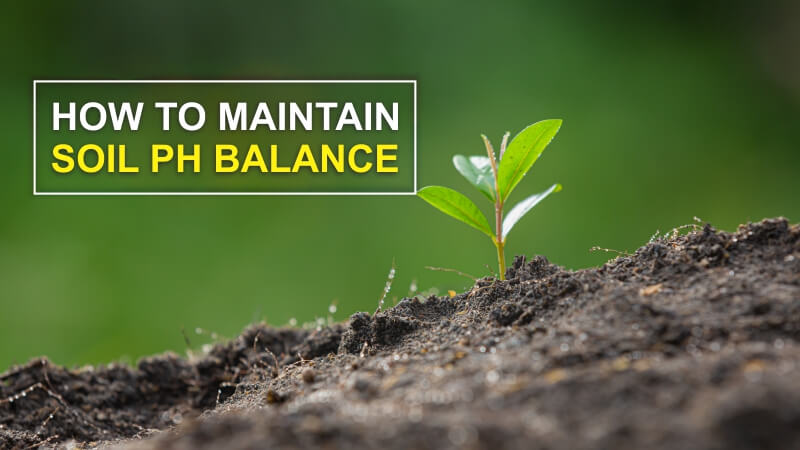The positive pH value of soil for ideal plant development shifts among crops. While certain harvests fill best in the 6.0 to 7.0 PH range, others develop well under marginally acidic conditions.
Soil properties that impact the requirement for and reaction to lime differ by district. Information on the soil and the harvest is significant in overseeing soil pH for the best yield execution.
Soils become acidic when fundamental components of soil like, calcium, magnesium, sodium and potassium held by soil colloids are supplanted by hydrogen particles.
Soils shaped under states of high yearly precipitation are more acidic than are soils framed under more dry conditions. In this manner, most southeastern soils are intrinsically more acidic than soils of the Midwest and far West.
Soils framed under low precipitation conditions will generally be essential with soil pH readings around 7.0. Concentrated cultivating over various years with nitrogen composts or excrement can bring about soil fermentation.
In the wheat-developing districts, which have soil pH of 5.0 and beneath, aluminum poisonous in wheat and great reaction to liming have been reported lately?
Factors Affecting Soil Acidity
Precipitation
Precipitation adds to soil’s acidity. Water (H₂O) consolidates with carbon dioxide (CO₂) to shape a powerless corrosive – carbonic corrosive (H₂CO₃). The delivered hydrogen particles and the calcium particles held by soil colloids, make the soil become acidic.
The dislodged calcium (Ca⁺⁺) particles join with the bicarbonate particles to shape calcium bicarbonate, which, being dissoluble, is filtered from the soil. The net impact of excess water is expanded soil acidity.
Nitrogen Fertilizers
Nitrogen levels influence soil PH. Nitrogen sources – composts, excrement, vegetables – contain or ammonium. This builds soil acidity except if the plant straightforwardly assimilates the ammonium particles.
The more prominent the nitrogen treatment rate, the more noteworthy the soil fermentation. As ammonium is changed over to nitrate in the soil (nitrification), H particles are delivered. For each pound of nitrogen as ammonium, it takes roughly 1.8 pounds of unadulterated calcium carbonate to kill the lingering acidity.
Additionally, the nitrate that is furnished or shaped can consolidate with fundamental cation like calcium, magnesium and potassium and filter from the soil into the earth. As these bases are eliminated and supplanted by Hydrogen particles then soils become more acidic.
Plants
Vegetables like soybeans and clovers will generally take up more cations in relation to anions. This makes H particles be let out of plant roots to keep up with the electro-chemical equilibrium inside their tissues. The outcome is net soil fermentation.
Acidity of Subsoil
Regardless of whether the main 6 creeps of soil show a pH above 6.0, the earth might be amazingly acidic. At the point when earths PH dip under 5.0, aluminum and manganese in the soil become significantly more solvent.
In certain soils, it might be poisonous for crop development. Cotton and, somewhat, soybeans are instances of harvests that are delicate to exceptionally solvent aluminum levels in the earth, and crop yields might be diminished under states of low soil PH.
If you have noticed areas of hindered plants in your field then take a soil test here. If the soil pH is amazingly acidic (beneath 5.2), lime ought to be applied from the get-go in the fall and turned as profoundly as could be expected.
Liming For Soil Acidity
Adjusting soil acidity by the utilization of lime is the underpinning of a decent soil fruitfulness program. Supplies fundamental plant supplements, Ca and Mg, assuming dolomite lime is utilized
Liming Materials
Liming materials contain calcium or potentially magnesium in structures, which when broken down, will kill soil acidity. Not all materials containing calcium and magnesium are equipped for decreasing soil acidity.
For example, gypsum (CaSO₄) contains Ca in obvious sums, however, doesn’t diminish soil acidity. Since it hydrolyzes in the soil, gypsum converts to a solid base and a solid corrosive.
Alkalinity by Soil Acidity
Basic sulfur might be utilized to ferment basic soil to the helpful pH range. It might likewise be utilized to keep up with pH in the advantageous reach, on soils that will quite often become antacid with the executives. At the point when basic sulfur is applied to soil, it consolidates with oxygen and water to frame sulfuric corrosive.
This oxidation of sulfur is achieved by specific microorganisms, and it might take from three to about a month and a half or longer, contingent upon the soil conditions. The better the sulfur is ground, the more quickly the change to sulfate and weaken sulfuric corrosive.
The pace of lessening in pH with basic sulfur might be like the pace of pH increment achieved by liming. The freer calcium carbonate present in the soil will take to ferment the soil. More sulfur will likewise be required on soils with free carbonates present.
Aluminum sulfate is one more alteration frequently utilized in elaborate cultivation to ferment soil in plant beds. In any case, a greater amount of it is expected to deliver a similar fermentation as essential sulfur, despite the fact that it offers the upside of a quicker response.
Ph Balance and Activator Kit by KhetiGuru
Use pH balancer and activator kit to increase soil fertility and for better plant growth with better nutrition. It Reduces soil erosion, promotes soil moisture and fertility. It increases growth and respiration.
It provides all the essential nutrients. It acts as the most effective soil optimizer. It increases the vitamin content of plants and the water-holding capacity of the soil.
Download the KhetiGuru Mobile Application for more guidance in the agricultural sector.
Visit our page for more information about Tractor, Agricultural implements, Tractor Price, Tractor Videos, and Tractor Games.




